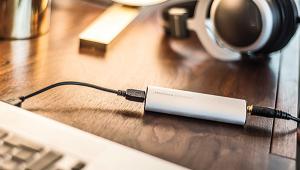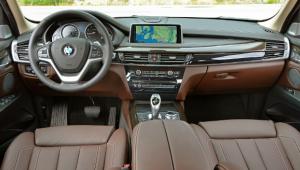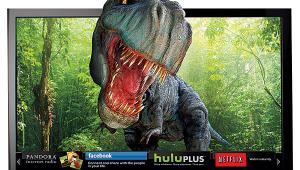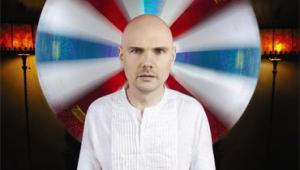Plasma vs. LCD Page 3
| Picture Detail |
You might think that detail on a plasma or LCD TV is directly proportional to its resolution, or pixel count - the more pixels, the more detail. Well, not exactly. DK's and my experience with reviewing TVs has shown us that other factors - contrast in particular - contribute to a set's sharpness and clarity.
But there were still some instances where the LCD's extra pixels gave it an edge over the plasma. Both DK and I noted that we saw more details in the billowing smoke emanating from the space shuttle in certain shots from the Digital Video Essentials footage. DK's enthusiasm for the LCD's crisp picture extended to DVDs as well. He noted greater detail in the illuminated stage set from Chicago and in close-ups of faces. He felt the plasma display's picture was slightly softer, causing scenes like the one in Master and Commander where the ship retreats into the fog after battle to look even "foggier."
But despite the LCD's resolution advantage on some material, both DR and I felt that the plasma had the upper hand overall when it came to picture detail. To our eyes, the plasma looked sharper on a broader range of programs. For example, I found that detail in shots of the sky-borne space shuttle evaporated every time the picture brightness exceeded a certain threshold on the LCD. The plasma, in my view, consistently rendered the same pictures with much greater subtlety. And in a static shot of steps leading down to a river bank on a Silicon Optix test DVD that DR brought along, he noted a fraction less detail on the LCD than the plasma. The result? Plasma won the Picture Detail round by a nose.
| Picture Uniformity |
Like Contrast, Picture Uniformity encompasses many things, including image smoothness (lack of "noise," which gives a harsh, grainy look), solidity, and viewing angle. This is also where we chose to gauge each set's handling of analog cable-TV programs. Because some aspects of Picture Uniformity are highly dependent on a set's video processing - something that varies from maker to maker - it's also the category that depends least on whether a set is LCD or plasma. To be consistent with our usual testing procedures, we switched off noise reduction via the user menus.
The Picture Uniformity evaluation had DK, DR, and myself at last seeing eye-to-eye. We all noted that the LCD gave a rough, blotchy look to shots with shadow gradations or flat patches of color, an effect known as "false contours." We saw many examples of this both in Tron, a sci-fi movie that makes heavy use of computer graphics, and in the battle scenes of Master and Commander. The smoke and fog surrounding the ships looked noticeably smoother and more uniform on the plasma.
The plasma also handled "noisy" video images much better than the LCD. With old movies or the woefully noisy Golf Channel on cable, the LCD seemed to accentuate video noise. But the plasma weathered these same images extremely well. Even with the set's noise-reduction feature switched off, analog cable TV looked relatively smooth compared with the LCD.
As for viewing angle - a key concern when you've got a bunch of people gathered around to watch the big game - both DK and I felt the sets were about equal. DR thought the LCD picture was slightly washed out when viewed from positions other than head-on. But all disagreements aside, plasma hammered LCD in the Picture Uniformity round.





























































